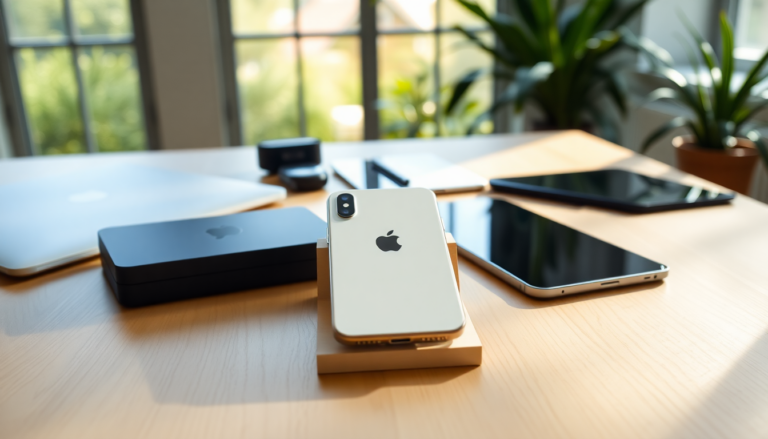Argomenti trattati
In the ever-evolving landscape of smartphone technology, Apple has managed to retain its crown as the leader in cellphone sales, according to recent data. The latest Global Handset Model Sales Tracker from Counterpoint Research reveals that the iPhone 16, particularly its base model, has emerged as the best-selling smartphone in the early months of 2025. This marks a notable shift, as it is the first time in two years that a standard model from the iPhone lineup has taken the top spot.
Apple’s strong position in the market
The iPhone 16 series is not just about the base model; the iPhone 16 Pro Max and 16 Pro have also claimed the second and third places, respectively. Following them is the iPhone 15, which holds the fourth position. It is only at fifth place that we see a non-Apple device—the Samsung Galaxy A16—entering the fray. The continued success of Apple’s products can be attributed to their robust design, user-friendly interface, and a loyal customer base that appreciates the brand’s commitment to quality and innovation.
The shifting dynamics of smartphone sales
Interestingly, Samsung’s Galaxy A06 and Galaxy S25 Ultra follow closely behind, but last year’s flagship, the S24 Ultra, has seen a decline in its sales ranking. This drop from fifth to seventh place within the span of a year raises questions about consumer preferences and the changing dynamics of smartphone usage. As more consumers seek value and practicality, the demand for high-end models might be shifting, signaling a possible trend away from the premium market.
Market trends and economic factors
The sales data also indicates a growing interest in budget-friendly smartphones. The segment of devices priced under $100 has emerged as the fastest-growing category, making up 20% of global smartphone sales in the first quarter of 2025. This shift could be influenced by economic factors, such as President Trump’s anticipated tariffs on electronics, which may drive consumers toward more affordable options. Companies like Apple and Samsung are responding by promoting refurbished models, appealing to cost-conscious buyers while still offering reliable technology.
Consumer preferences evolving
Another takeaway from this analysis is that more consumers seem to prefer non-Pro models. The data suggests that there is a significant market demand for the standard versions of smartphones rather than their high-end counterparts. Last year, the iPhone 15 Pro Max was the top-selling device; however, the trend appears to be shifting as more users opt for devices that provide essential features without the premium price tag. This evolution in consumer behavior highlights a broader trend where practicality takes precedence over luxury.
The future of smartphone sales
As we move further into 2025, it will be fascinating to observe how these trends continue to unfold. Will Apple maintain its stronghold, or will competitors like Samsung and emerging brands find ways to capture a larger market share? The smartphone market is notorious for its rapid changes and consumer demands that can shift overnight. With economic pressures and changing preferences at play, companies must remain agile and responsive to stay relevant.
The future of smartphone sales is likely to be influenced by a combination of innovation, market strategy, and consumer behavior. As the demand for affordable yet reliable smartphones grows, manufacturers may need to adapt their offerings to meet the needs of a more budget-conscious consumer base while still pushing the boundaries of technology.

